Chicken stock can easily turn a dish's flavor from bland to really tasty. Plus, it boosts the nutritional value of the food and adds some extra health benefits. And here's how to make chicken stock easily at home...
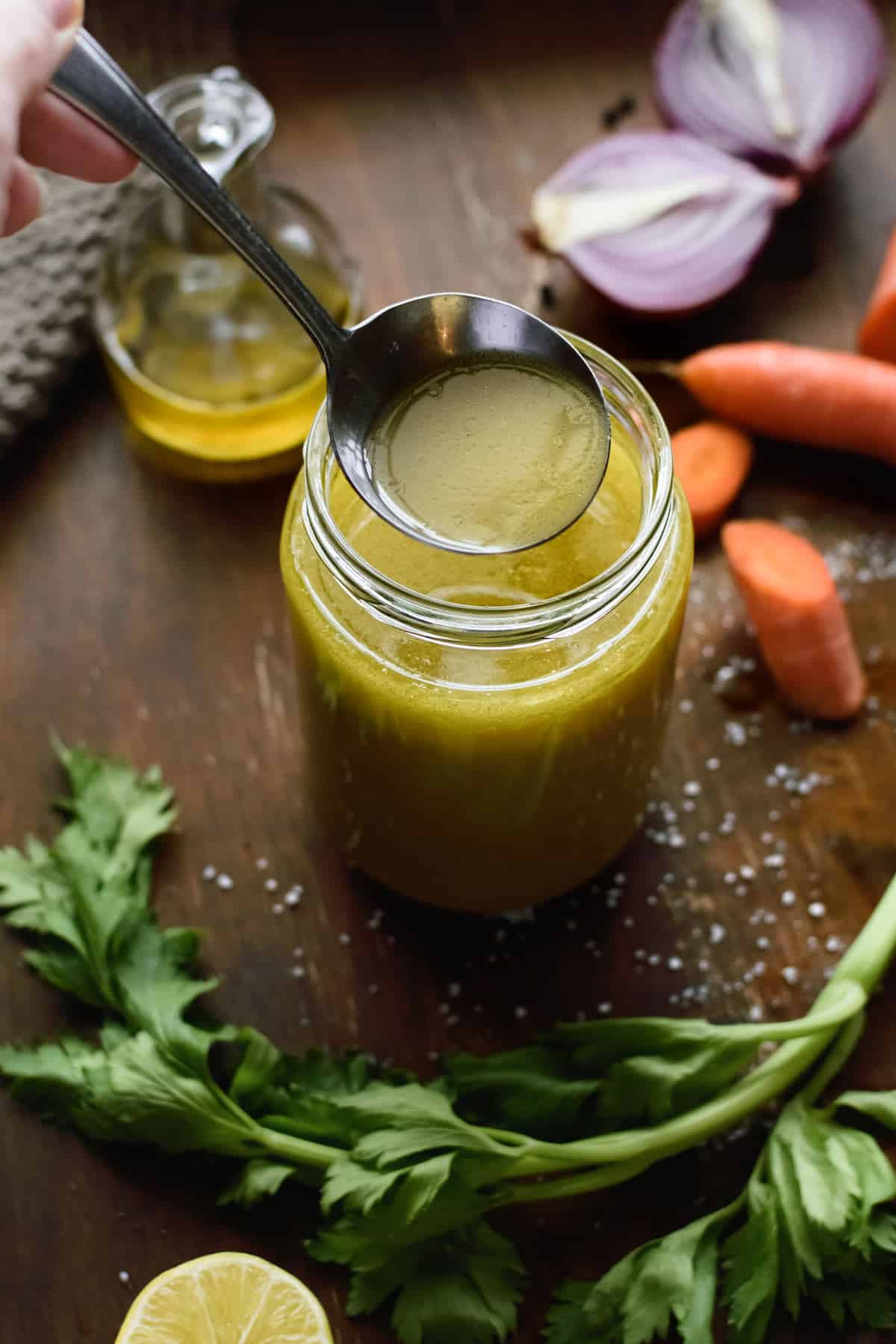
To make homemade chicken stock, you need chicken bones. Any leftover bits of chicken parts containing bone will do. For example, instead of throwing away the neck or wing parts when you cook chicken keep them to make stock. And if they're the only bones you have at the moment, place them in a freezer bag and store them in the freezer. Until you have enough bones to make a stock. As the more bones, you use to make a stock the more flavorful it gets. You can even ask a butcher to de-bone a whole chicken for you if you don't feel confident doing it yourself.
Here's a tutorial if you want to give it a try.
To make a chicken stock you also need various vegetables. Just like with a veggie stock you can use any vegetable bits and leftovers you have. It doesn't matter that much which vegetables you are going to use. As long as you use a variety of them to create a strong flavor. Though you cannot of course use vegetables that may color the stock like beetroots for instance.
Whichever vegetables you decide to use in your stock you shouldn't miss one out. Can you guess which one is it? Ta-da onion! Besides adding flavor to food and a naturally occurring sweetness when cooked, onions give a nice "glazy-ness" as well.

What's The Difference Between Chicken Stock And Broth?
Stock is made mostly out of bones while a broth is made mostly out of meat parts with or without bones. Stock is used instead of plain water to boost the flavor of a stew, soup, or sauce. Whereas broth or bouillon in French, can be served even on its own as a refined soup that may contain bits of meat or vegetables. Or served strained. A famous broth containing both bits of vegetables and meat is Scotch Broth.
Is Homemade Chicken Stock Healthier Than The Ones You Buy At The Store?
It depends. You can buy healthy chicken stock at the store. But you have to read the labels to make sure they don't contain preservatives. Usually, organic labels like this one, are good to use. If there is an ingredient on that label with ingredients that you don't know then my advice is don't buy it. That's my rule. Not that I usually buy chicken stock as I prefer making my own. And that's because of the flavor you get from homemade chicken stock. That no store-bought stock can compete with.
Now as for stock cubes, for me they're a no-no. Not only because of all the additives they contain but also for the artificial flavor they add to the food. And I will give you an example, one day my mother cooked Fasolakia. We all sat down to eat and I take the first bite. Then the second. Then my mother asks -what's wrong and you're making that face? And I say, -that can't be. -What? she asks again. -They must have started adding additives to tomato paste now. And she started laughing then. Saying afterward that she only added ¼ of a vegetable stock cube to the food and how could I tell.
That's because I always prefer eating wholesome foods with clean flavors. And I am a firm believer that when you eat a vegetable you should be tasting the flavor of that vegetable. And not some artificial additive that I am sure no one can tell what it is. So yes, you guessed it. I absolutely hate stock cubes and their flavor. But I can understand that people who were used to eating food cooked with them (because nobody used to tell us what was bad for us in the past) may be finding the original flavors of foods a bit bland. And here's where homemade stocks kick in. And you can make them as strong flavored as you like. How?

The strength of the chicken stock will depend on:
- how many bones you use.
- how many vegetables (and how big their variety).
- for how long you cook and let the stock reduce down to.
- plus roasting the bones a bit before adding them to the pot gives extra flavor.
Originally stocks are cooked for many hours. And the larger the bones the more they get cooked. For example, a proper beef stock may cook for up to 9 hours. Until it releases all of the bone marrow into the liquid and reduces down to a glazy strong-flavored liquid. That doesn't mean you need that many hours to make a stock. It just means the longer you cook it the better it gets.
Health Benefits Of Chicken Stock
Chicken stock has some great benefits for our health. The collagen you get out from the bones is very restorative for body tissues. And especially the lining of the digestive tract. So it's very helpful and soothing for digestive issues. Hense why chicken soup is a famous remedy for sickness. Plus bone marrow is a great source of the following nutrients: iron, Vitamin A and K, fatty acids, selenium, zinc, manganese.
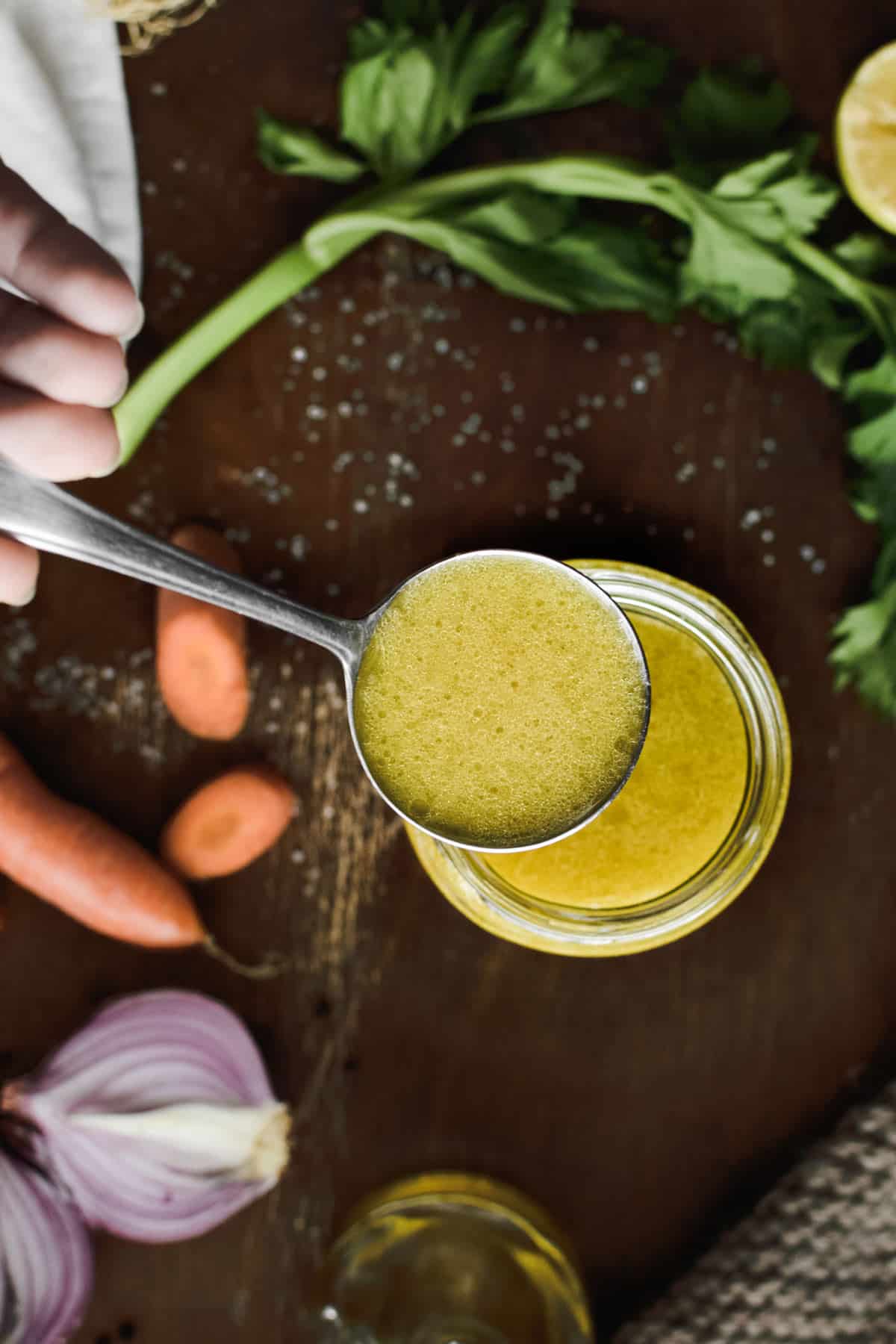
How To Store Chicken Stock
After the stock cools down to room temperature, you may store it in glass jars in the fridge for up to 4 days. Or you can transfer into small espresso paper cups or bigger paper cups if you prefer, cover with plastic wrap, and store in the freezer for up to 6 months. And each time you need chicken stock simply remove it from the freeezer. Paper cups are very convenient as they are easy to store in the freezer without breaking. Plus you know how many ml each cup is and can use as much as you need according to each recipe.
Recipe
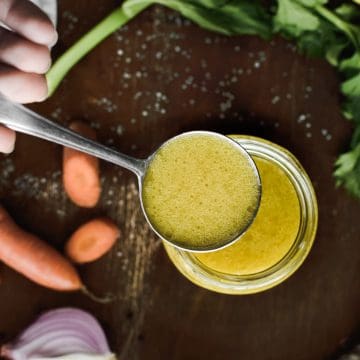
How To Make Chicken Stock Easily At Home
Ingredients
- 1 kilogram 2 lb + 3 oz chicken bones and parts like wings, neck.
- ½ lemon cut in quarters
- olive oil
- 2 medium-sized onions finely chopped
- 3 carrots cut into chunks
- 1 stick celery cut into chunks
- 1 stick of leek cut into chunks
- 3 cloves of garlic
- any leftover bits of vegetables such as white cabbage, cauliflower, turnips, mushrooms
- 2 dried bay leaves
Instructions
- Preheat oven to 250°C / 482°F.
- Lay the chicken bones in a baking pan that fits them. Toss the lemon pieces here and there. Add a drizzle of olive oil all over on top. Season with a bit of salt and pepper.
- Place pan in the oven and bake for 30 minutes. Until the chicken bones get a light brownish color. Remove from oven and set aside. Discard the lemons.
- In a tall cooking pot or stockpot add a splash of olive oil and heat over high. Add the onion and drop the heat to medium-low. Let the onion caramelize slowly for a few minutes. Until it becomes completely soft, mellow, and golden in color. This will give a natural sweetness to the stock as well as a light thickening.
- Then take the pot off the heat and add all of the remaining vegetables and the bay leaves. Add the chicken bones on top as well. Pour 1 liter of hot boiling water in the pan where you have cooked the chicken and scrape it from any browned bits using a wooden spoon. Pour this water in the pot. Then add as much hot water as needed to cover all of the ingredients in the pot completely.
- Bring the pot back on the heat and bring to a boil. Then reduce heat to medium-low and simmer partly covered for about 2 hours.
- The liquid in the pot should reduce at least by half. If after 2 hours it hasn't reduced that much then raise the heat to high and cook for a few minutes more.
- Take the pot off the heat. Remove the bones and then pass the stock through a strainer. Press and squeeze the vegetables with a spoon to get all their flavor. You may then pass the strained stock through a finer mesh sieve for a more refined stock.
- Transfer either to a large glass jar (it should yield about 500 ml or more). That is if you're going to use it within the next 4 days. Alternatively transfer stock to small espresso paper cups let them reach room temperature then cover each cup with plastic wrap and place them in the freezer for up to 6 months. Whenever you're in need of chicken stock remove as many paper cups as you need and either unfreeze in the microwave or remove the paper cup and add as is to melt in the sauce or soup you are making.
Nutrition
YOU MAY ALSO LIKE...

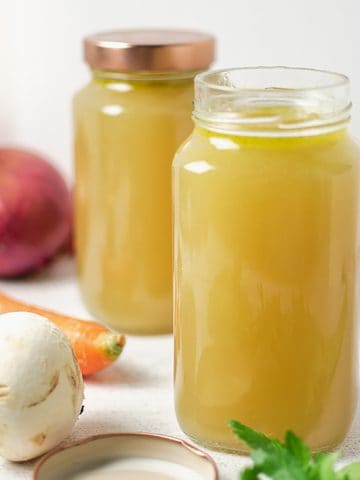



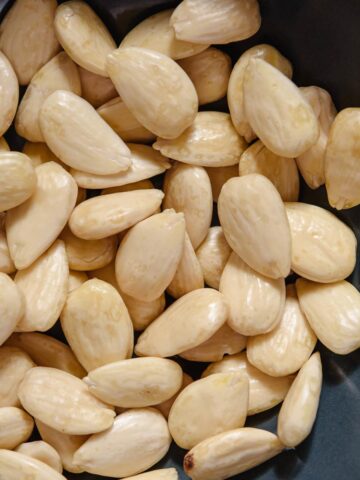

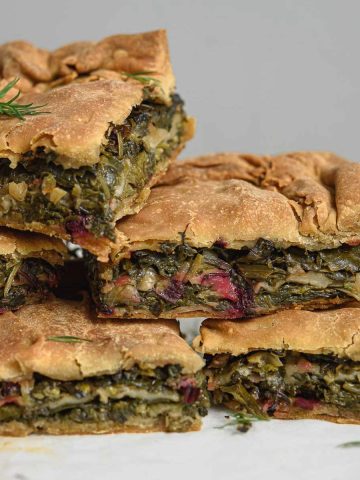
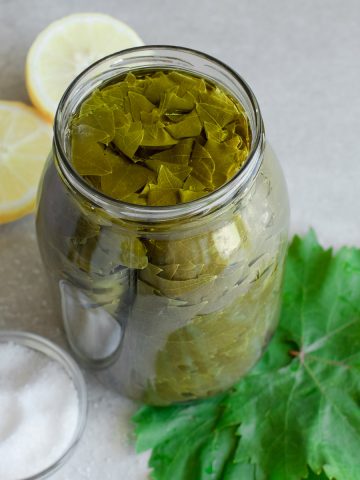
Leave a Reply